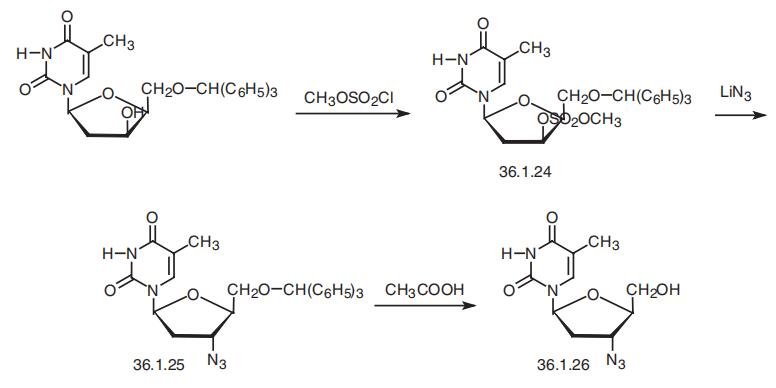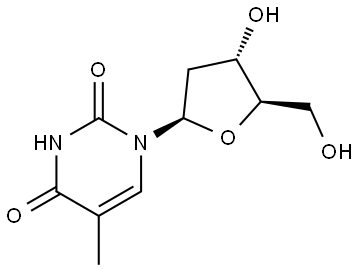
Zidovudine
- Product NameZidovudine
- CAS30516-87-1
- CBNumberCB1354971
- MFC10H13N5O5
- MW283.24
- EINECS623-849-4
- MDL NumberMFCD00006536
- MOL File30516-87-1.mol
- MSDS FileSDS
Chemical Properties
| Melting point | 113-115 °C (lit.) |
| Boiling point | 410.43°C (rough estimate) |
| alpha | D25 +99° (c = 0.5 in water) |
| Density | 1.3382 (rough estimate) |
| refractive index | 47 ° (C=1, H2O) |
| Flash point | 9℃ |
| storage temp. | 2-8°C |
| solubility | H2O: 50 mg/mL |
| pka | pKa 9.53(H2O t = 25.0±0.1 I = 0.00) (Uncertain) |
| form | Powder |
| color | White to Off-white |
| Water Solubility | 1-5 g/100 mL at 17 ºC |
| Sensitive | Light Sensitive & Hygroscopic |
| Merck | 14,10123 |
| BRN | 3595791 |
| BCS Class | 1,3 |
| Stability | Stable for 2 years from date of purchase as supplied. Solutions in DMSO or ethanol may be stored at -20°C for up to 3 months. |
| InChIKey | HBOMLICNUCNMMY-BWZBUEFSSA-N |
Safety
| Symbol(GHS) |
  
|
| Signal word | Danger |
| Hazard statements | H303-H225-H301+H311+H331-H370-H351 |
| Precautionary statements | P210-P260-P280-P301+P310-P311-P281-P501a-P201-P202-P308+P313-P405-P501 |
| Hazard Codes | Xn |
| Risk Statements | 40-36/37/38-20/21/22 |
| Safety Statements | 36/37/39-45-36-26 |
| RIDADR | UN1230 - class 3 - PG 2 - Methanol, solution |
| WGK Germany | 3 |
| RTECS | XP2072000 |
| F | 10 |
| Hazard Note | Harmful |
| HS Code | 29349990 |
| Hazardous Substances Data | 30516-87-1(Hazardous Substances Data) |
| Toxicity | LD50 in male, female mice, male, female rats (mg/kg): 3568, 3062, 3084, 3683 orally; >750 i.v. (all species) (Ayers) |




